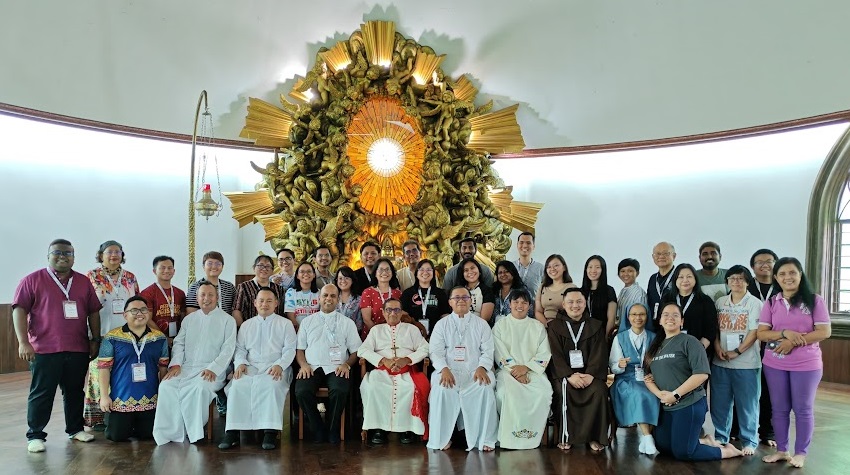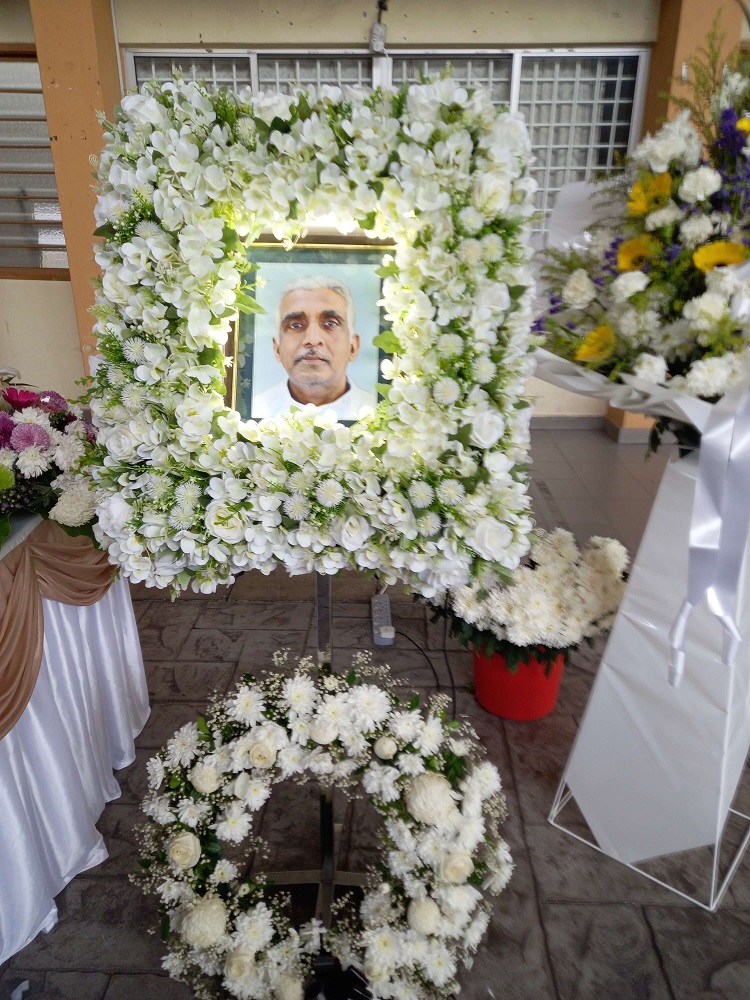KOTA KINABALU: Social communicators from the nine Catholic dioceses in…
DOPP drafter gives his take on its impact on diocesan life
 PENAMPANG – The Diocesan Organisational Pastoral Plan (DOPP) of Kota Kinabalu Diocese was drafted by a core team in 1996. It was accepted and launched on 16 Sept 1997. Twenty years later (14 Aug 2017), Dominic Lim, one of the drafters, was asked to give his views on how it has affected the life of the diocese since then.
PENAMPANG – The Diocesan Organisational Pastoral Plan (DOPP) of Kota Kinabalu Diocese was drafted by a core team in 1996. It was accepted and launched on 16 Sept 1997. Twenty years later (14 Aug 2017), Dominic Lim, one of the drafters, was asked to give his views on how it has affected the life of the diocese since then.
Asked on its positive impact, Lim said the desired end of the DOPP is the attainment of the Diocesan Vision viz to be a communion of Christ-centred communities journeying together in the faith, hope and love of Jesus Christ, empowered by the Holy Spirit to build up the Kingdom of God.
In this area, he continued, many of the faithful have been active in church groups such as parish committees, basic ecclesial communities, and quite a number have made long-term commitments in ecclesial movements.
Lim noted that there is a greater sense of belonging to the diocesan family through participation in diocesan programmes organised such as Jubilee Year 2000, Diocesan Silver Jubilee 2001-2002, Eucharistic Congress 2004, ordinations and anniversaries of clergy and religious, the Priestly Year, the Year for Consecrated Life, Jubilee Year of Mercy, and others.
“I see these as positive signs of moving towards a communion of Christ-centred communities, a greater effort to journey together. The journey towards the dream will take time. DOPP as a Pastoral Plan has only a 7-year timeframe and in fact it has expired. It is too short a time to achieve our Vision. But the signs are there. We just have to continue to remind each other of our Vision, move together towards that common direction and continue to allow the Spirit to empower us,” he said.
As for striking changes, Lim said, “We have moved away from a centralised pastoral structure (PAX Board of Directors) that decided the direction we moved as a diocese to a more consultative and participative approach with the Vision as our common direction.”
While he admitted that there is still much room for improvement, the parish community is now able to plan and move from where they are towards the Vision though some [parishes] are still struggling to “grasp the elements of the Vision, others are already implementing the Objectives stated in the DOPP.”
He saw this as “something more realistic in being Church because the maturity level of our communities differs from place to place.”
Lim pointed out that the emphasis on ongoing personal and communal conversion is “the key” to a total and integral renewal.
This, he added, is enhanced by living out the commitments spelt out in the Mission Statement, that is, living out a life of prayer nourished by the sacraments and the Word, guided by church teachings, unity in communities, respecting values of other faiths, responsible stewardship of the environment, and promoting justice and peace in society.
Lim noted that since the DOPP, there are more people attending daily Mass and coming forward to help in RCIA, Alpha and other church activities. Many seminars, recollections, retreats and other faith formation programmes have been conducted. There are also more inter-church activities.
“And there has been a greater awareness of our faith response to societal issues. All these were not very visible 20 years ago,” he said.
Lim, who works in the archdiocesan secretariat, pointed out that the mission ad gentes of the archdiocese was enhanced through the setting up of new pastoral structures such as the Social Communications Commission and Human Development Commission, the Montfort Youth Training Centre, the Sacred Heart Charity, Pusat Kebajikan Good Shepherd and other welfare programmes of the lay movements, and the strengthening of the church’s role in mission schools.
As for ways and means to maintain the DOPP spirit, Lim recalled the speech of Bishop John Lee during the launching of DOPP on 16 Sept 1997 at the Sacred Heart Cathedral. The bishop admitted that the DOPP was quite technical but as long as “we adopted and lived the spirit behind the whole planning exercise, we would have achieved something – our new way of being Church begins not in what we do but how we live with each other in the Church and with the world around us.”
He said that to maintain the spirit, streamers on the Diocesan Vision and Mission were printed and hung on the walls of many chapels and halls to remind the people of their common direction in pastoral life.
In addition, Lim continued, the Diocesan Prayer was recited and continues to be recited on Sundays and feast days.
“The seminar on pastoring together in 1998 had laid the foundation for a better understanding of collaborative ministry while the bishop’s keynote addresses at subsequent PAX Assemblies after 1997 touched on elements of the Diocesan Vision to promote and maintain the DOPP spirit,” he added.
Lim noted that the changes from PAX Board of Directors to Diocesan Pastoral Council in 1998, from Parish Council to Parish Pastoral Council in 1999 had concretised collaboration among the clergy, religious and laity in pastoral leadership and mission of the Church in line with the Diocesan Vision.
The DOPP drafter pointed out: “DOPP as a Pastoral Plan was overtaken by events since its launching. The two big events – Great Jubilee Year 2000 and the Silver Jubilee of the Diocese in 2002 were not anticipated during the formulation of the Plan but somehow the diocese was able to blend them into the spirit of the DOPP.”
Lim noted that though the DOPP implementation might not have been strictly according to the Timelines stated in the document, many of its Enabling Objectives have been carried out in various forms over the past 20 years.
In conclusion, he suggested that the term DOPP be dropped since the Plan has already expired. Instead, the archdiocese should just focus on the Vision and Mission.
Another member of the DOPP Core Team, Magdalene Chu, described the process of coming together and thinking through the vision and mission of the local diocese was good. She said it made concrete the universal mission of the church in the local church context.
The Archdiocesan Prayer still being said, she added, is good as it helps to remind everyone of the mission and needs of the archdiocese. (KK became an archdiocese in 2008).



